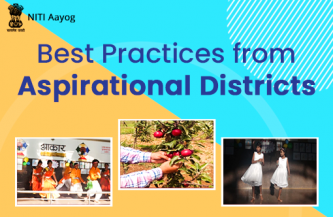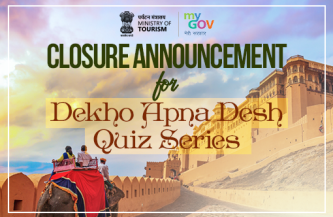Beginning of India’s cultural renaissance

The month-long Kashi Tamil Sangamam, which showcased Tamil culture, heralded a new era where ancient Indian traditions intermingle with one another and are revitalized with the help of modern practices so that they contribute to cultural and economic growth. It gave a rich cultural context to India’s mission to become a developed country by 2047. The event carried forward our tradition of Ek Bharat Shrestha Bharat.
Ancient Links
Kashi, one of the oldest living cities of the world, and Tamil Nadu, where people proudly speak the world’s oldest language, are towering pillars of ancient Indian civilization. Both have rich, old traditions of arts, music, craftsmanship, philosophy, spirituality and literature. Yet, for decades after independence, few people in north India knew about the Tamil saints who lived in Kashi and intensified its spiritual aura, or the tradition of taking holy Ganga Jal (water) to the Rameswaram temple, or the Kashi Yatra ritual in some Tamil weddings. Likewise, many in Tamil Nadu were not fully familiar with the ancient links between the two cultures.
Prime Minister Narendra Modi took a different approach and launched the Kashi Tamil Sangamam. He rightly said that this cultural intermingling was as holy as the confluence of the Ganga and the Yamuna rivers.
The event saw people from all walks of life from Tamil Nadu visiting Kashi. They experienced the city’s traditions and its iconic landmarks such as the Kashi Vishwanath temple, they approached the temple through the new corridor, which has transformed and beautified the sacred area in line with the vision of Mr. Modi, who represents Varanasi in the Lok Sabha.
The Prime Minister’s initiative to build the landmark Kashi Vishwanath corridor, which connects the Jyotirling with the Ganga, embellishes traditions with a touch of modernity for the benefit of residents and visitors. Similarly, the Sangamam created a unique platform to rediscover and integrate our heritage and ancient knowledge with modern thought, philosophy, technology and craftsmanship. This creates a new body of knowledge and fosters innovations that will help our artisans, weavers, entrepreneurs and traders. For instance, Varanasi is well known for Banarasi silk saris, and Kancheepuram, for its shimmering silk saris. Weavers and entrepreneurs from both regions have a lot to gain from interacting with each other and from their exposure to modern practices of branding, quality control, marketing, product consistency, the use of modern machinery and value addition.
Focus on Textile
The government organised a textiles conclave during the Sangamam. Several eminent landmark Kashi Vishwanath corridors, which connects the Jyotirlinga with the Ganga, embellishes traditions with a touch of modernity for the benefit of residents and visitors. Similarly, the Sangamam created a unique platform to rediscover and integrate our heritage and ancient knowledge with modern thought, philosophy. Technology and craftsmanship. This creates a new body of knowledge and fosters innovations that will help our artisans, weavers, entrepreneurs and traders. For instance, Varanasi is well known for Banarasi silk saris, and Kancheepuram, for its shimmering silk saris. Weavers and entrepreneurs from both regions have a lot to gain from interacting with each other and from their exposure to modern practices of branding, quality control, marketing, product consistency, the use of modern machinery and value additions.
The textiles sector, which has great Job-creating potential, is a key part of our mission to become a developed country by 2017, India’s textiles market is expected to grow at a CAGR of 1217 to nearly $2 trillion by 2047, while exports from the sector are expected to grow at double digits Mr. Modi’s SE formula (farm, fiber, fabric, fashion, foreign) will accelerate growth in the sector and transform the lives of farmers and weavers, Kashi and Tamil Nadu have a key role to play to achieve this vision. The government is personalities of different segments of the textile industry from Tamil Nadu and Kashi shared their experiences exchanged ideas at a session on Amrit-Kaal vision 2017. They were excited and confident about the government’s vision of raising textiles exports to Sto0 billion by 2030 and creating new opportunities in the sectors.
The Sangamam ended on December 16. About? lakh people visited the campus of the Banaras Hindu University which hosted cultural shows and a popular exhibition that highlighted Tamil products and cuisine The Sangamam has ignited a new cultural zeal in India and whetted the country’s appetite for more. The textiles sector is planning a similar event in Tamil Nadu.
More importantly, as Home Minister Amit Shah said, the Sangamam is the beginning of India’s cultural renaissance that is not limited to the bonding of Tamil Nadu and Kashi, It will extend nail cultures of this great country also encouraging technical textiles, which have phenomenal potential. These products include functional textiles that are used in vehicles, protective clothing, bulletproof vests and construction. Man-made fiber, also an area of focus, has great potential for growth and exports.
The Sangamam was in step with the entire spectrum of this government’s policies. These policies accord top priority to accelerating development with a focus on welfare of the poorest of the poor, love for Indian culture, and promoting local industries and handicrafts.
We are strongly promoting the One District One Product scheme that will take Indian products to the world market. Mr. Modi is a brand ambassador for these products and gifts them to world leaders. Apart from saris, the textiles conclave also dwelled on wooden toys. Traditional wooden toys of Varanasi are getting more export enquiries and are being showcased in international business exhibitions
Traditional products will also get a big boost from other government initiatives such as the Open Network for Digital Commerce and the Government e-Marketplace.
Not limited to Tamil Nadu and Kashi
The Sangamam ended on December 16. About 2 lakh people visited the campus of the Banaras Hindu University which hosted cultural shows and a popular exhibition that highlighted Tamil products and cuisine. The Sangamam has ignited a new cultural zeal in India and whetted the country’s appetite for more. The textiles sector is planning a similar event in Tamil Nadu.
More importantly, as Home Minister Amit Shah said, the Sangamam is the beginning of India’s cultural renaissance that is not limited to the bonding of Tamil Nadu and Kashi. It will extend to all cultures of this great country.
Author – Shri Piyush Goyal is Union Minister of Commerce & Industry, Consumer Affairs and Food & Public Distribution and Textiles

















